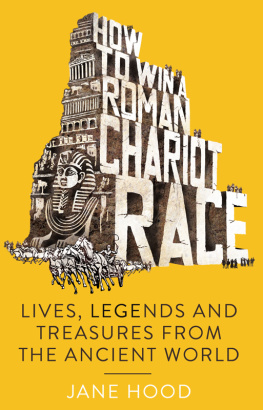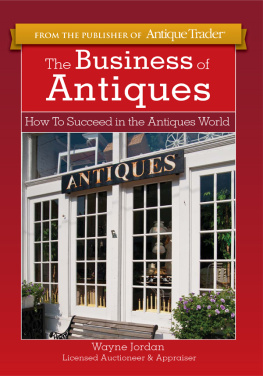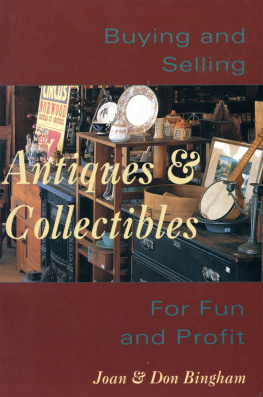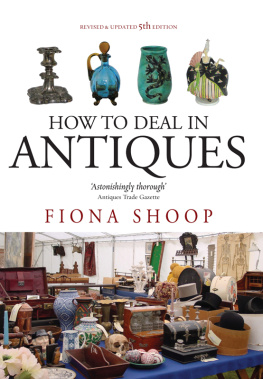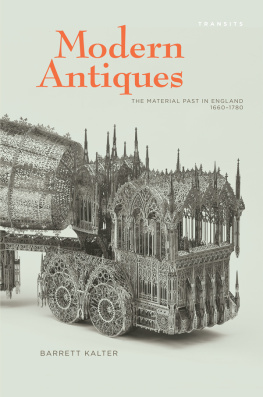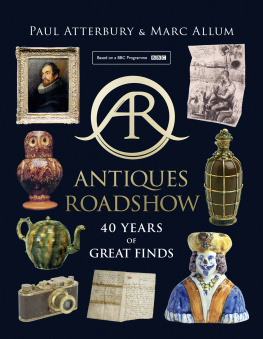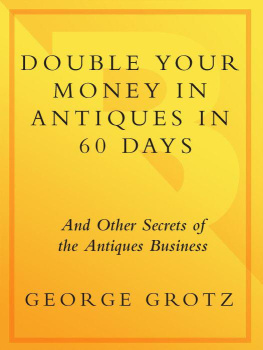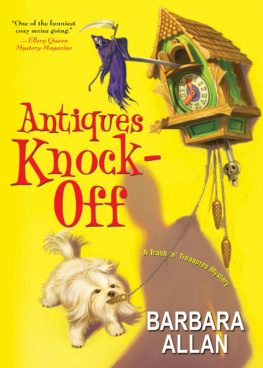HOW TO WIN A ROMAN CHARIOT RACE
Other miscellanies available from Icon Books
The Collectors Cabinet: Tales, Facts and Fictions from the World of Antiques
The Foodie: Curiosities, Stories and Expert Tips from the Culinary World
The Science Magpie
The Nature Magpie
HOW TO WIN A ROMAN CHARIOT RACE
LIVES, LEGENDS AND TREASURES FROM THE ANCIENT WORLD
JANE HOOD
This edition published in the UK in 2015 by Icon Books Ltd.
Previously published in the UK in 2014 by
Icon Books Ltd, Omnibus Business Centre,
3941 North Road, London N7 9DP
email:
www.iconbooks.com
Sold in the UK, Europe and Asia
by Faber & Faber Ltd, Bloomsbury House,
7477 Great Russell Street,
London WC1B 3DA or their agents
Distributed in the UK, Europe and Asia
by TBS Ltd, TBS Distribution Centre, Colchester Road,
Frating Green, Colchester CO7 7DW
Distributed in Australia and New Zealand
by Allen & Unwin Pty Ltd,
PO Box 8500, 83 Alexander Street,
Crows Nest, NSW 2065
Distributed in South Africa
by Jonathan Ball, Office B4,
The District, 41 Sir Lowry Road,
Woodstock 7925
Distributed in Canada by Publishers Group Canada,
76 Stafford Street, Unit 300
Toronto, Ontario M6J 2S1
ISBN: 978-184831-946-2
Text copyright 2014, 2015 Jane Hood
The author has asserted her moral rights.
No part of this book may be reproduced in any form, or by any means, without prior permission in writing from the publisher.
Typeset in Centaur by Marie Doherty
Printed and bound in the UK by
Clays Ltd, St Ives plc
For Bryn, Carys and Elen who are everything.
ABOUT THE AUTHOR
Jane Hood has been a lecturer in Classical Languages and Literature, and in Philosophy, ending up as a fellow in Ancient Philosophy at the University of Oxford, specialising in Aristotle and Ancient Medicine. She has held research fellowships in Philosophy in Paris and in Ancient Medicine with the Wellcome Institute in London. She is also a qualified teacher who has taught people from the ages of four to 72. She likes nothing more than a few peaceful moments by the sea on the Gower in South Wales.
INTRODUCTION
This is a miscellany. There is no other justification for its content than that it includes the things that I find funny, terrible, entertaining or important. If there is a theme running through this book, it follows the point made by the historian Thucydides when examining the origins of the Peloponnesian War, the war that tore ancient Greece apart. He said that human nature, being what it is, will do the same and similar things again. That is why his history was said by him to be a ktema es aei a possession for always because we always make the same mistakes.
When we look at the ancient world, it is as though we are looking in an old mirror: the sort that is speckled with black as the sheen has worn off. The sort where the old glass has started to slip and ever so slightly distort the image that we see. We are looking at ourselves by looking at the ancient world: it is both familiar and unfamiliar at the same time. It is our culture and it is not.
This is a book that picks out the best and the worst of another world, and there are two aspects to the topics chosen. The first is that of the distorted mirror. The second is that of a continuum. There is a story that links us to the past. Each day that we trace it back leads us closer to a world that is no more. It is the reverse of the conundrum of the watchmakers watch or Theseus ship: you replace each part over time, but is it still the same watch? Is it still the same ship? Each day takes us further from that past, but is it still our past? Of course, it has to be; it is just a little more alien with each day.
The Greeks, the Romans, the Egyptians and the people of the Near East, even 2,000 or more years ago, are our brothers and sisters who taught us how to be civilised. If we look at them straight on in the mirror, we can recognise the same problems, the same love affairs, the same wars and the same issues over property. But we also need to assimilate the distance that keeps us apart in order to learn the lessons of history, poetry and philosophy that remain constant.
We love as intensely as they did because we are, essentially, the same animals: the time that has passed is too short for us to be genetically significantly different. But the world operates in a dramatically different way now, and the pressures we face are, most of the time, not comparable. How many ancient Greeks were there complaining about overtime in the office? Or about mortgage rates? Near Eastern childrens toys were stuck together with the bitumen that bubbled naturally to the surface. Would you believe its first use would be as glue today, if oil started flowing in a park in Birmingham?
On the other hand, we have precisely the same struggles. Women (because the buck always stops there) cared very much about effective methods of contraception. Men cared about a night out and the flute girls. Has anything really changed?
There are also long-standing problems. The Greeks brought to us mathematical systems that are the basis of our understanding of the universe. Unfortunately, there is still not one complete version that works in all circumstances. There are atoms, the uncuttable fundamentals of the universe, devised by Democritus and Leucippus, but no one knows yet whether they are matter or waves. What does it mean to be good? Who really is my friend?
A lot of muttering tweed-wearing old schoolteachers gave Classics a very bad name because, I think, they made the subject incredibly dull, and that notion lives on today. No one, apart from a hardened military historian, really wants to read about precisely when Caesar dug a ditch or built a rampart.
I hope this book will make you think again about it all. Really, there was a world of lust, learning, fighting, food, joy and death that the ancients took part in. They really were a lot like us. They just didnt have an iPhone. But they did have a computer
WHAT IT WAS LIKE
This section is rather a rag bag from the past. But then a lot of history is. It looks at some of the more outr aspects of the past and is intended to give a burst of flavour of the classical world. Like them or hate them: just enjoy.
Chariot racing and Roman hooligans
Roman chariot racing was a bit like a cross between top-flight football and Formula 1 racing. It was prestigious, it was fast, it could easily be deadly and it was exceptionally partisan.
Throughout the Roman period, there were four main chariot racing teams: the Reds and the Whites (the two original superstar teams) and the Blues and the Greens (who were the later superstars), which were associated with different areas of Rome. The Emperor Domitian (AD 5196) added another two teams, but they were dropped on his death (as was almost everything to do with him, he was so hated). The teams were named after the colours they wore, so they could be spotted easily by their supporters. Rather like a team strip.
Chariot racing was also linked to legend. It is said that Romulus used racing just after he founded Rome to distract the Sabine men, the local tribe. They were so absorbed in the races, they did not notice that Romulus and his men had carried off the Sabine women and that they became the first Roman wives.

